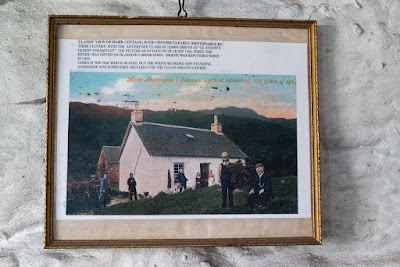For a change, we decided to drive a long way from the open sea for our last trip. We left Glasgow in thick misty conditions, so thick that we missed the turn off for the Erskine Bridge and nearly ended up in Greenock. Fortunately the mist was rising by the time we arrived.
Our destination was Arrochar at the head of Loch Long. The open sea was 160km away, down Loch Long, the Firth of Clyde and the North Channel, between the Mull of Kintyre and Ireland. There are two
car parks at the head of Loch Long but the tide was out, revealing evil, black mud. We launched instead, from the slipway near the old pier and parked at the
car park beside the village hall. If an event is on and this full, an alternative is to and park on some
open ground to the south of the Village Inn and launch from the old slipway to its north, or some steep stone steps opposite.
Only the sea weed at low tide betrays that Loch Long is not a fresh water lake, nestling deep within the mountains.
At sea level we were still deep in the shade but high above us, the rising sun already shone on the summit of
Ben Arthur, 884m. The Cobbler, as the Ben is commonly known, appeared to hunch over the head of the loch.
The still water of Loch Long reflected the forests of the Cobbler's foothills while this cormorant sat immobile, hunched against the cold like the Cobbler. It didn't look like a good day for fishing...
...but perfect for sea kayaking, so we wasted no time getting ready.
As the mist rose and the sky cleared, the temperature plummeted and the shaded road turned into a sheet of ice.
We were very careful as we carried the kayaks along to the slipway. I have never understood kayak coaches, who insist on warm up exercises before paddling. We were roasting by the time we got the kayaks to the shore.
Mind you, Phil didn't stay roasting for long. Jim and I left him for an hour as we negotiated the treacherous mountain road over to
Lochgoilhead, where we left a shuttle car before returning to Arrochar.


















































